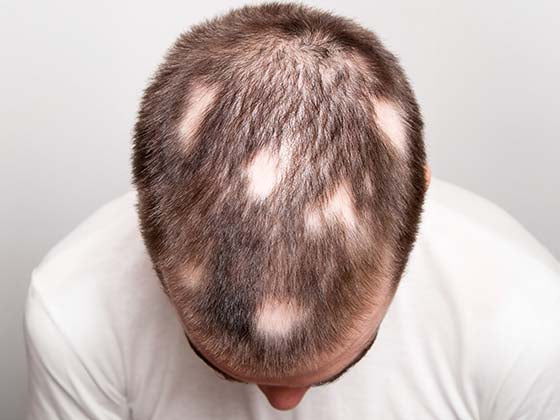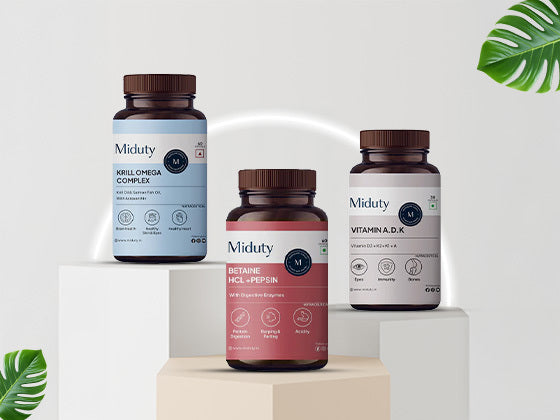Blue tansy essential oil is an aromatic oil obtained from the blue tansy plant (Tanacetum annuum). This plant is endemic to North Africa, specifically Morocco, and is recognised for its eye-catching blue blossoms. The essential oil is extracted through steam distillation, which uses the plant's blossoms and sometimes its leaves to extract the fragrant chemicals. This blog will go over some of the important properties and components of blue tansy essential oil.
Diving Deep: What is Blue Tansy Essential Oil?

Blue tansy essential oil is an aromatic oil produced from the blue tansy plant, Tanacetum annuum. This plant is native to North Africa, specifically Morocco, and is known for its bright blue, daisy-like blossoms. Blue tansy essential oil is extracted through steam distillation, which uses the plant's blooms and sometimes its leaves to extract the volatile, fragrant components. Here's a closer look into blue tansy essential oil, including chamazulene, aromatherapy, skin benefits, dilution, patch testing, and individual variations. Individual reactions to essential oils, however, can vary, and they may not be suitable for everyone. If you have specific skin concerns or conditions, consult a dermatologist or skincare professional before incorporating blue tansy essential oil into your beauty routine.
The Origins and Extraction Process
Blue tansy essential oil is extracted from the Tanacetum annuum plant, which is formally known as Tanacetum annuum. It is mainly found in North Africa, especially in Morocco and its surrounding regions. It is easily identified by its vivid blue, daisy-like flowers. The following procedures are involved in the steam distillation method of oil extraction:
-
Harvesting: The blue tansy plant's flowers and occasionally its leaves are used to extract the essential oil. In full bloom, the plant is usually harvested because the essential oil content is highest at this time.
-
Distillation: The plant material that has been harvested is put inside a still or other distillation device. The plant material is exposed to steam, which causes the plant's essential oil to evaporate.
-
Condensation: Steam and the evaporated essential oil ascend through the distillation apparatus. It next goes through a cooling process, where it returns to liquid form by condensing.
-
Separation: The essential oils float on top of the condensed water because they are lighter than water. This makes it simple to extract the essential oil from the water.
-
Collection: The concentrated, pure essence of the blue tansy plant is found in the collected essential oil. The anti-inflammatory substance chamazulene is what gives it its characteristic deep blue colour.
The highly concentrated nature of blue tansy essential oil means that a lot of plant material is required to make a tiny amount of oil. Because of its potency, it is usually diluted with a carrier oil, such as jojoba or coconut oil, before being applied to the skin or used in aromatherapy. Dilution ensures that the essential oil can be used safely on the skin without causing irritation.
The Distinct Aroma of Blue Tansy
Blue tansy essential oil has a distinct aroma that is sweet, herbaceous, and slightly fruity. This distinct fragrance is the result of the oil's aromatic compounds. Here's a closer look at the key components of blue tansy essential oil's aroma:
-
Chamazulene: Chamazulene is the most important aromatic compound in blue tansy essential oil. It gives the oil its deep blue colour and contributes to its therapeutic properties. Chamazulene has a sweet, fruity, and herbaceous scent that contributes significantly to the oil's aroma.
-
Sabinene: Another important component of blue tansy oil is sabinene. It has a woody, spicy, and citrusy scent that adds complexity to the overall fragrance of the oil.
-
Camphor: Camphor, which has a fresh, medicinal, and slightly minty aroma, is found in small amounts in blue tansy essential oil. The oil may have a refreshing quality due to the presence of camphor.
-
Other Terpenes: Blue tansy oil contains a number of terpenes and sesquiterpenes that contribute to its overall scent profile. These compounds can have earthy, woody, or citrusy aromas.
The combination of these aromatic compounds produces a sweet, herbaceous, and slightly fruity aroma that many people find calming and emotionally uplifting. Its relaxing and mood-enhancing properties make it popular in aromatherapy. The distinct scent of blue tansy essential oil distinguishes it from other essential oils, and its pleasant fragrance is one of the reasons it is popular in the beauty and wellness industries. Blue tansy oil's fragrance can enhance the overall experience and contribute to a sense of relaxation and well-being when used in aromatherapy or skincare. However, keep in mind that individual aroma preferences vary, so what one person finds pleasant, another may not.
The Potential Power: Benefits for Skincare

Blue tansy essential oil is regarded as providing a variety of potential skincare benefits, making it a popular ingredient in the beauty and wellness industries. These benefits are primarily attributable to its anti-inflammatory and antioxidant properties. Anti-inflammatory qualities, acne control, skin soothing, antioxidant protection, moisturiser, managing sebum production, and anti-aging effects are just a few of the potential skincare advantages of blue tansy essential oil. While blue tansy oil is good for many people's skin, individual outcomes may vary. Some people are more sensitive to essential oils than others; thus, before applying blue tansy oil to the skin, dilute it with a carrier oil. To rule out any allergic reactions or sensitivities, a patch test on a small area of skin is also recommended.
Acne-Fighting Abilities of Blue Tansy
The essential oil of blue tansy is highly regarded for its anti-inflammatory, antimicrobial, and calming qualities, which may help combat acne. The following is how blue tansy oil might treat acne:
-
Anti-Inflammatory Properties: Chamazulene, a substance with potent anti-inflammatory effects, is present in blue tansy oil. Acne frequently causes redness and inflammation. By putting blue tansy oil on acne-prone areas, you may be able to lessen the redness and swelling of blemishes as well as these inflammatory symptoms.
-
Calming Sensitive Skin: The calming properties of blue tansy can aid in the soothing of sensitive and irritated skin. Acne-prone skin is often more sensitive, and blue tansy oil can help relieve the itching and discomfort caused by breakouts.
-
Antimicrobial Action: Propionibacterium acnes, a type of bacteria that causes acne, is often overgrown on the skin and is the cause of acne. By inhibiting the growth of these bacteria, blue tansy oil's antimicrobial qualities may help lessen the intensity and frequency of breakouts.
-
Balancing Sebum Production: Blue tansy oil can help regulate sebum (skin oil) production. Excess sebum can clog pores, causing acne. Blue tansy may help to clear up oily skin by balancing sebum production.
-
Scar Healing: Blue tansy oil may also help to reduce the appearance of acne scars. Its anti-inflammatory and antioxidant properties can aid in the healing process of the skin, which is critical for scar reduction.
The use of blue tansy essential oil for acne treatment should be done cautiously. The following things to think about:
-
Dilution: Because blue tansy oil is highly concentrated, it should be diluted with a carrier oil before being applied to the skin. Essential oils that are not diluted can cause skin irritation.
-
Patch Test: Before using blue tansy oil more extensively, perform a patch test on a small area of your skin to ensure you do not have an allergic reaction.
-
Individual Differences: Not all people's skin reacts the same way to essential oils. What works for one person may not work for another, and some people are more sensitive to essential oils than others.
-
Consult a Professional: If you have severe or persistent acne, you should see a dermatologist or skincare professional for a customised treatment plan.
While blue tansy essential oil has the potential to benefit acne-prone skin, it is not a one-size-fits-all solution, and its efficacy varies from person to person. For the best results, it must be used responsibly and in conjunction with a well-rounded skincare routine.
Anti-inflammatory and Soothing Properties
Blue tansy essential oil is prized for its anti-inflammatory and calming properties. It is a popular choice for a number of skincare and wellness applications due to these properties. As indicated below, blue tansy essential oil possesses anti-inflammatory and relaxing properties:
Anti-Inflammatory Properties:
-
Chamazulene is the main ingredient that gives blue tansy oil its anti-inflammatory properties. The bright blue color of the oil is attributed to the release of chamazulene during the distillation process. It is well renowned for having strong anti-inflammatory properties that help lessen skin irritation, swelling, and redness.
-
Blue tansy oil can help soothe skin conditions characterised by redness, such as acne, rosacea, and other types of skin irritation. It accomplishes this by suppressing the inflammatory response in the skin.
Soothing Properties:
-
Because of its soothing properties, blue tansy essential oil is an excellent addition to skincare products designed to relieve itching, redness, and discomfort. It can provide relief to people who have sensitive, inflamed, or irritated skin.
-
Aside from its topical benefits, blue tansy oil's pleasant aroma is used in aromatherapy to create a calming and emotionally uplifting environment. Inhaling the scent can aid in stress reduction and relaxation.
Because of its anti-inflammatory and calming characteristics, blue tansy essential oil is commonly used in skincare products such as serums, lotions, and masks. It can provide treatment for a variety of skin issues and boost overall skin health when used correctly and in conjunction with other skincare practises. To avoid any potential unpleasant effects, dilute the oil and do a patch test before applying it to your skin. Individual reactions to essential oils can vary, so be cautious and attentive to your skin's demands.
Incorporating Blue Tansy in Skincare Routines
There are various methods to use blue tansy essential oil in your beauty routine, but it is critical to use it carefully because it is a highly concentrated oil. Here are some things to think about while including blue tansy oil in your skincare routine:
-
Dilution: Blue tansy essential oil is highly concentrated and should be diluted with a carrier oil before application to the skin. 1-2 drops of blue tansy oil per tablespoon of carrier oil (e.g., jojoba, coconut, or sweet almond oil) is a typical dilution ratio. This ensures the oil's safety and lowers the danger of skin irritation.
-
Patch Test: Perform a patch test before applying blue tansy oil on your face or body. Apply a tiny amount of the diluted mixture to a small region of your skin, such as your inner forearm, and wait 24 to 48 hours for any unpleasant reactions or sensitivities to appear. Do not use the oil on your face if you have any redness, itching, or irritation.
-
Spot Treatment: Acne can be treated with blue tansy oil as a spot therapy. Apply a tiny amount immediately to blemishes or areas of inflammation after dilution to help reduce redness and soothe the skin. It's best to do this in the evening because the oil has a tiny blue color that some people dislike.
-
Facial Serum: Combine blue tansy oil with other beneficial oils to make a calming facial serum. You can, for example, combine it with rosehip oil and argan oil to create an anti-aging and moisturising serum. After cleansing, apply a few drops to your face with a dropper and follow with your regular moisturiser.
-
Aromatherapy: In addition to its skincare benefits, blue tansy oil is frequently used in aromatherapy to promote relaxation and stress reduction. To enjoy its calming effects, add a few drops to an essential oil diffuser or inhale its aroma directly from the bottle.
-
Hydrosols: You can also incorporate blue tansy hydrosols (floral waters) into your skincare routine. These are less concentrated than essential oils and can be used to refresh and hydrate your skin as a facial mist or toner.
-
Seek Professional Advice: If you have specific skin concerns or conditions, or if you want to incorporate blue tansy oil into a more complex skincare routine, you should seek personalised advice from a dermatologist or skincare professional.
Individual reactions to essential oils can vary, so pay attention to your skin and adjust your skincare routine accordingly. Begin slowly and sparingly to see how your skin reacts to blue tansy oil. If any adverse reactions occur, stop using the product and seek professional advice.
The Double-Edged Sword: Potential Concerns and Considerations

While blue tansy essential oil has several potential benefits, it is important to be aware of the following concerns and considerations before incorporating it into your skincare routine:
-
Skin Sensitivity: Blue tansy essential oil, like many essential oils, can cause skin irritation, especially when used undiluted. Before applying it to the skin, always dilute it with a carrier oil. Before using it on a larger scale, conduct a patch test on a small area of your skin to check for any allergic reactions or sensitivities.
-
Blue Tint: The presence of chamazulene gives blue tansy oil a deep blue color. While the color is generally not an issue when diluted, some people may notice a slight tint or temporary skin discoloration if used at high concentrations. If you are concerned about this, apply the oil in the evening to allow any residual color to fade overnight.
-
Pregnancy and Nursing: Before using blue tansy essential oil, consult with a healthcare professional if you are pregnant or nursing. While it is generally considered safe when properly diluted, it is always best to be cautious during pregnancy and breastfeeding.
-
Phototoxicity: Although blue tansy essential oil is not typically considered phototoxic, individual sensitivities can vary. To be safe, avoid applying it to your skin immediately before sun exposure or tanning, as it may cause skin reactions in some people.
-
Essential Oil Allergies: If you have a history of allergies to essential oils or botanical products, use blue tansy oil with caution. Allergic reactions are possible, so it is best to check with an allergist or dermatologist before using.
-
Professional Advice: If you have specific skin conditions or concerns, you should consult a dermatologist or skincare professional. They can give you personalised advice and may suggest alternative treatments if blue tansy oil is not right for you.
-
Dilution Ratio: To ensure safe essential oil use, always follow recommended dilution guidelines. Blue tansy oil dilution is typically 1-2 drops of essential oil per tablespoon of carrier oil, but this can vary depending on individual sensitivity.
-
Quality and purity: Use high-quality, pure blue tansy essential oil from reputable sources. Low-quality or contaminated oils may not provide the anticipated benefits and may even cause adverse reactions.
Side Effects to Watch Out For
When using blue tansy essential oil in your skincare routine, be aware of the potential side effects and monitor your skin for any adverse reactions. While many people can use blue tansy oil safely, there are some side effects and considerations to be aware of:
-
Skin Irritation: Blue tansy essential oil is potent, and if used undiluted or in high concentrations, it can cause skin irritation. Irritation symptoms include redness, itching, burning, or a rash. To reduce the risk of irritation, always dilute blue tansy oil with a carrier oil.
-
Allergic Reactions: Some people are allergic to blue tansy essential oil or its constituents. Allergic reactions can cause skin redness, hives, swelling, and even breathing difficulties. If you have a history of allergies to essential oils or botanical products, use blue tansy oil with caution.
-
Photosensitivity: Although blue tansy oil is not usually regarded as phototoxic, using it may cause some people to become more sensitive to UV light or sunlight. To be safe, avoid applying the oil to your skin right before going outside in the sun.
-
Staining: Blue tansy oil has a deep blue colour that, when used in high concentrations, can temporarily tint the skin or fabric. This is primarily a cosmetic concern, but it is important to be aware of it, especially if you intend to use the oil during the day.
-
Eye Irritation: Avoid making direct contact with the eyes. Blue tansy oil can cause discomfort or irritation if it comes into contact with the eyes. If this occurs, immediately rinse the eyes with clean water and seek medical attention if the irritation persists.
-
Pregnancy and Nursing: If you are pregnant or nursing, consult a healthcare professional before using blue tansy essential oil, as its safety during pregnancy and breastfeeding has not been thoroughly researched.
-
Children and Pets: Keep blue tansy oil out of the reach of children and pets because it is toxic if consumed. Always keep essential oils in a safe and secure place.
-
Quality and Purity: Use only high-quality, pure blue tansy essential oil sourced from reputable sources. Low-quality or contaminated oils may not provide the expected benefits and may even cause adverse reactions.
If you have any negative reactions, stop using blue tansy essential oil and seek medical attention if necessary. It is also a good idea to do a patch test on a small area of your skin before applying the oil to a larger area to check for sensitivities or allergic reactions. Individual reactions to blue tansy oil can vary, as with any skincare product, so it is important to be cautious and attentive to your skin's response when incorporating it into your routine. Consultation with a dermatologist or skincare professional can be beneficial, particularly if you have specific skin concerns or conditions.
Sustainability and Ethical Sourcing Concerns
The use of essential oils such as blue tansy in skincare and wellness products raises important questions about sustainability and ethical sourcing. The following are important things to remember:
-
Plant Sustainability: The blue tansy is mainly indigenous to Morocco and other parts of North Africa. The long-term viability of the plant population is a major concern. Overharvesting can degrade habitat and endanger the plant's survival in the wild. In order to maintain the long-term sustainability of blue tansy, producers of essential oils must use sustainable harvesting and cultivation methods.
-
Ethical Sourcing: It is equally important to make sure that the blue tansy essential oil is sourced ethically. The welfare and just compensation of local communities engaged in the cultivation and harvesting of blue tansy should be taken into account by ethical sourcing practises.
-
Certifications: Look for essential oil brands and suppliers who have "organic" or "fair trade" certifications. These certifications frequently indicate a commitment to ethical and sustainable sourcing practises. Certifying bodies can assist in determining the authenticity and quality of the oil.
-
Transparency: It is essential that the supply chain be transparent. Brands should be transparent about their sourcing practises, such as where they get their blue tansy oil, how it is harvested, and the working conditions of those involved in the production process.
-
Conservation Efforts: Some businesses and organisations are actively involved in conservation and reforestation efforts to protect the blue tansy and its habitat. Supporting brands that invest in such initiatives can help to ensure their long-term viability.
-
Ecological Impact: It is important to evaluate the larger environmental impact of essential oil extraction. Sustainable practises should reduce the impact on ecosystems and species.
-
Fair Wages: Another strategy to ensure ethical sourcing is to support firms that provide equitable compensation to supply chain employees. Fair pay can help people involved in blue tanch cultivation and harvesting improve their living conditions.
-
Alternatives: If you are concerned about the sustainability or ethical sourcing of blue tansy, consider using alternative essential oils. Many essential oils have similar properties and benefits, and they may be sourced more responsibly.
-
DIY and Homegrown: If you are concerned about the ethical and environmental impact of essential oil production, you can experiment with making your own skincare products from herbs and plants you grow or find locally.
-
Advocacy: Get involved in advocating for sustainable and ethical practises in the essential oil industry. You can help bring about positive change by supporting organisations and initiatives that promote responsible sourcing.
Debunking Blue Tansy Myths in Skincare

Blue tansy has grown in popularity in the skincare industry, but as with many other ingredients, there are some myths and misconceptions about its use. Let us dispel some of these myths:
-
Myth: Blue Tansy Essential Oil Can Cure Acne: While blue tansy essential oil has anti-inflammatory and soothing properties that can aid in acne management, it is not a cure-all. Acne is a complex condition with numerous causes, and its treatment frequently necessitates a multifaceted approach. Blue tansy can be a useful addition to your skincare routine, but it may not be enough to completely eliminate acne.
-
Myth: Blue Tansy Essential Oil Can Be Used Undiluted: Blue tansy essential oil is highly concentrated and should never be used on the skin undiluted. Applying essential oils undiluted can cause skin irritation, burns, and allergic reactions. Before using blue tansy oil, always dilute it with a suitable carrier oil.
-
Myth: The deeper the blue, the better: Chamazulene, which is generated during the distillation process, is responsible for the strong blue color of blue tansy oil. Some individuals assume that a deeper blue indicates higher quality. In actuality, the color of the oil has little to do with its quality. Purity, sourcing, and distilling procedures are all elements that influence quality.
-
Myth: Blue Tansy is Good for Everyone's Skin: While blue tansy oil is beneficial to many skin types, it may not be appropriate for everyone. Some people may be sensitive to or allergic to certain components of the oil, necessitating a patch test and extreme caution.
-
Myth: Blue Tansy Can Be Used in Place of Medical Treatments: Blue tansy oil is a skincare product that should not be used in place of medical treatment. If you have a skin condition or a medical concern, it is critical to see a doctor for proper diagnosis and treatment.
-
Myth: More is Better: Applying too much blue tansy oil to the skin is not beneficial and can cause irritation. Always follow the recommended dilution ratios and usage instructions.
-
Myth: Blue Tansy Can Reverse Aging: While blue tansy oil has antioxidant properties that can help protect the skin from premature aging, it is not a magical solution to reverse the signs of aging. Anti-aging skincare entails a comprehensive approach that includes sun protection, a healthy lifestyle, and the use of various products that address specific concerns.
-
Myth: Blue Tansy Is the Only Solution: There are numerous essential oils and skincare ingredients that have properties similar to blue tansy. If you are concerned about the ethical or environmental implications of using blue tansy, or if it does not suit your skin, look into alternatives.
Blue tansy is a valuable addition to many people's skincare routines, but it is critical to separate fact from myth and use it responsibly. Skincare is an extremely personal endeavor, and what works for one person may not work for another. If you have specific skin concerns or questions, always be informed, perform patch tests, and consult with skincare professionals.









































